Noruz in Persian means "New(-year)-day". It is the beginning of the year for the people of Afghanistan, Azerbaijan, Iran, and Tajikistan. Other Asian republics of the former Soviet Union are joining the group, and the latest report says that Turkey too has decided to declare Noruz a holiday. It is also celebrated as the New Year by the people of the Iranian stock, particularly the Kurds, in the neighboring countries of Georgia, Iraq, Syria, and Turkey. It begins precisely with the beginning of spring on the vernal equinox, on about March 21.
Tradition takes Noruz as far back as 15,000 years -- before the last ice age ended. King Jamshid (Yima or Yama of the Indo-Iranian lore) symbolizes the transition of the Indo-Iranians from animal hunting to animal husbandry and a more settled life in human history. Seasons played a vital part then. Everything depended on the four seasons. After a severe winter, the beginning of spring was a great occasion, with mother nature rising up in a green robe of colorful flowers and the cattle delivering their young. It was the dawn of abundance. Jamshid symbolizes the person/people who introduced Noruz celebrations.
Avestan and later scriptures show that Zarathushtra improved, as early as 1725 B.C., the old Indo-Iranian calendar. The prevailing calendar was luni-solar. The lunar year is of 354 days. An intercalation of one month after every thirty months kept the calendar almost in line with the seasons. Zarathushtra, the Founder of the Good Religion, himself an astronomer, founded an observatory and he reformed the calendar by introducing an eleven-day intercalary period to make it into a luni-solar year of 365 days, 5 hours and a fraction.
Later in the post-Gathic period, the year was made solely a solar year with each month of thirty days. An intercalation of five days, and a further addition of one day every four years, was introduced to make the year 365 days, 5 hours, and a fraction. Still later, the calendar was further corrected to be a purely solar year of 365 days 5 hr 48 min 45.5 sec. The year began precisely with the vernal equinox every time and therefore, there was no particular need of adding one day every four years and there was no need of a leap year. This was [and still is] the best and most correct calendar produced thus far.
Some 12 centuries later, in 487 B.C., Darius the Great of the Achaemenid dynasty (circa 550 B.C. to 331 B.C.) celebrated the Noruz at his newly built Persepolis in Iran. A recent research study shows that it was a very special occasion. On that day, the first rays of the rising sun fell on the observatory in the great hall of audience at 6:30 a.m., an event that repeats itself once every 1400 to 1401 years. It also happened to coincide with the Babylonian and Jewish new years. It was, therefore, a highly auspicious occasion for the ancient peoples. Persepolis was the place where the Achaemenid king received his peoples from all over the vast empire on Noruz. The walls of the great royal palace depict the scenes of the celebrations.
We know the Parthians (250 B.C. to 224 C.E.) celebrated the occasion but we do not know the details. It should have, more or less, followed the Achaemenid pattern. During the Sassanid era (224 to 652 C.E.), preparations began at least 25 days before Noruz. Twelve pillars of mud bricks, each dedicated to one month of the year, were erected in the royal court. Various vegetable seeds -- wheat, barley, lentils, beans, and others -- were sown on top of the pillars. They grew into luxurious greens by the New Year Day.
The great king held his public audience and the High Priest of the empire was the first to greet him. Government officials followed next. Each person offered a gift and received a present. The audience lasted for five days, one day each for the people of a particular profession. Then on the sixth day, called the Greater Noruz, the king held his special audience. He received members of the royal family and courtiers. Also, a general amnesty was declared for convicts of minor crimes. The pillars were removed on the 16th day and the festival came to a close. The occasion was celebrated, on a lower level, by all peoples throughout the empire.
Since then, the peoples of the Iranian culture, whether Zoroastrians, Jews, Christians, Muslims, or others, have, under Arab, Turk, Mongol, and Iranian rulers, celebrated Noruz precisely at the time of the vernal equinox, the first day of the first month, on about March 21.
Zoroastrians have six seasonal thanksgiving festivals, called "Gahanbars," to celebrate in a year. The vernal equinox, called Hamaspathmaidhaya in the Avesta, meaning "Middle of Equal Paths," or in a simpler rendering "vernal equinox" is the top celebration. It was called in later days "Nava Saredha" and still later Now Sal, both meaning "New Year". Today it is known as Noruz, New Day. It is the first day of spring in the Northern Hemisphere.
The early Zoroastrians counted their era, the Zoroastrian Religious Era (ZRE), from Noruz (vernal equinox) of 1737 B.C. It may be noted that the credit of precisely calculating ZRE goes to an Iranian scholar, the late Zabih Behruz. Right now, we are going through the last month of 3742 ZRE. It was practically revived by the Zoroastrian Assembly 15 years ago and has been happily adopted by the Zoroastrians in Iran and abroad, including in North America.
The Zoroastrian era was abandoned when the Achaemenid monarchy was influenced by the prevailing custom in Mesopotamia. The year started with the accession to the throne of every monarch. That is the reason why Zoroastrians -- followers of the Fasli (solar), the Shahenshahi (majority of Parsis), the Qadimi (a minority of Parsis and Iranis of India and Pakistan) calendar -- have the Yazdgerdi era, the year King Yazdgerd ascended the throne in 632 C.E. Both Shahenshahi and Qadimi reckoning have a year of 365 days only. They have advanced almost seven months by gaining one day every four years. It means that they gave up the leap year (avardâd sâlgâh) about 854 years ago -- in about 1150 C.E. All Iranian Zoroastrians follow the Fasli, the seasonal or the solar calendar.
When Iranian Muslims returned to the solar year, they reckoned with the Hejra year in solar terms. It will be 1384 Khorshidi (solar) this Noruz. The months are Farvardin, Ordibehesht, Khordad, Tir, etc. in Iran and Zodiac months in Afghanistan.
Noruz table
Every house gets a thorough cleaning almost a month before. Wheat, barley, lentils, and other vegetable seeds are soaked to grow on china plates and round earthenware vessels some ten days in advance, so that the sprouts are three to four inches in height by Noruz.
Today, the ceremony has been simplified. A table is laid. It has a copy of the Holy Qur’an, a mirror, candles, incense burner, bowl of water with live gold fish, the plates and vessels with green sprouts, flowers, fruits, coins, bread, sugar cone, various grains, fresh, colorfully painted boiled eggs like "Easter eggs" and above all, seven articles whose names begin with the Persian letter "S" (seen). The usual things with "S" are vinegar (serkeh), sumac (somâgh), garlic (sîr), samanu (a kind of halwa made of germinating wheat), apple (sîb), senjed (sorb), and herbs (sabzi). The seven articles are prominently exhibited in small bowls or plates on the table. The table is laid with a white cloth. White represents spotless purity.
Let me repeat the brief play put up by young members of the Zoroastrian Assembly to define the significance of the seven plates of "S". The youngsters, dressed in tune with what they represent, tell us by themselves their own significance. Those with "S" inform us:
First Plate: I am "Serkeh," the vinegar. I am sour but I am a good preservative. I add taste to the things you want to preserve and relish. I symbolize tasty preservation.
Second Plate: I am "Sumac," exotic in my own way. I make your favorite kabobs have a tangy taste, a taste you relish. I symbolize taste.
Third Plate: I am "Sir," garlic. Some may not like my aroma and others love it. I lower blood pressure. I pacify. I symbolize peace.
Fourth Plate: I am "Samanu," a sweetish paste, a kind of "halwa," made from germinating wheat. I symbolize the sprouting spring, the time for happy growth.
Fifth Plate: I am "Sib," apple. I symbolize the fruits of our world, both literally and allegorically.
Sixth Plate: I am "Senjed," the tasteless berry of the sorb tree. I am the fruit of a tree which provides shade in summer. I symbolize the shelter and security you need when you want a rest.
Seventh Plate: I am "Sabzi," fresh green herbs. I come from green fields. I symbolize prosperity.
The mirror reflects our past and shows us our present so that we thoughtfully plan our future. The candles are light, warmth, and energy to lead a righteous life that would, in turn, radiate light, give warmth, and provide energy for others. The incense burner gives the fragrance we need to meditate, pray to God, and ask for help and guidance. The goldfish symbolizes a happy life, full of activity and movement. The plates of green sprouts represent creativity and productivity, and so do the colorfully painted eggs.
As you see, the whole table is beautifully laid out. It symbolizes the Message and the Messenger, light, reflection, warmth, life, love, joy, production, prosperity, and nature. It is, in fact, a very elaborate thanksgiving table for all the good and beautiful things bestowed by God.
Family members, all dressed in their best, sit around the table and eagerly await the announcement of the exact time of the vernal equinox over the radio or television. The head of the family recites the Noruz prayers, and after the time is announced, each member kisses the other and wishes him/her a Happy Noruz. Elders give gifts to younger family members. Next, the rounds of visits to neighbors, relatives, and friends begin. Each visit is reciprocated.
The festivity continues for 12 days, and on the 13th morning, the mass picnic in the countryside begins. It is called "Sizdah-Bedar," meaning "thirteen-in-the-outdoors." Cities and villages turn into ghost towns with almost all the inhabitants gone to enjoy the day in woods and mountains along streams and riversides. People sing, dance, and make merry. Girls of marriageable age tie wild grass tops into knots and make a wish that the following Noruz may find them married and carrying their bonny babies!
Noruz greetings:
Noruz piruz (wishing you a prosperous New Year) -- this is the most common phrase;
Noruz mobarak (happy Noruz, happy New Year);
Eid-e shoma mobarak (happy New Year to you);
Sad saal be in saal-ha (wishing you 100 more happy New Years).

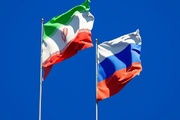
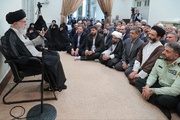

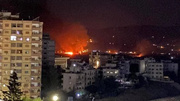
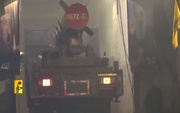













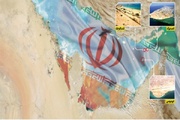
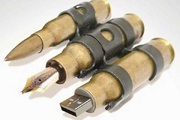


Your Comment